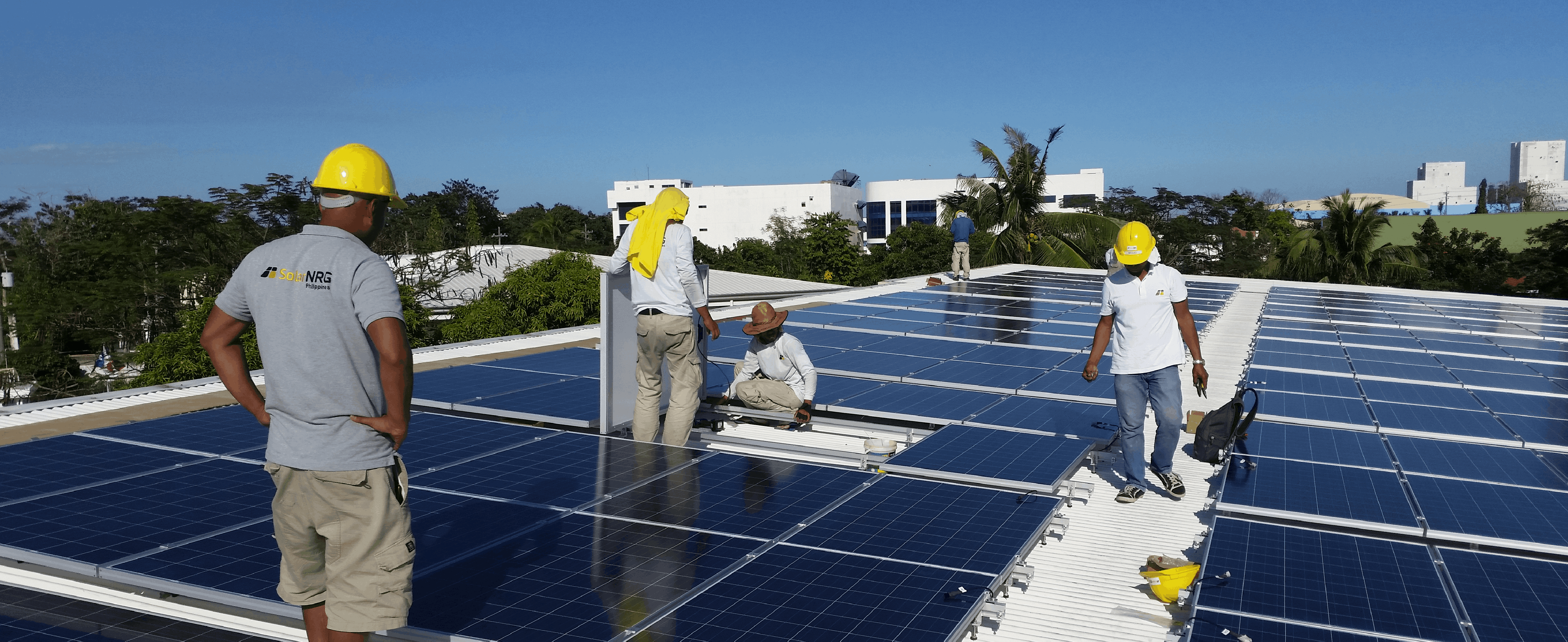Frequently Asked Questions
When sunlight hits a solar panel, the panel starts generating “DC” (Direct Current) electricity. The DC electricity is fed into a solar inverter that converts it into “AC” (Alternating Current) electricity. AC electricity is used to power homes, businesses and communities.
Any excess power that you generate goes into the main power grid if your system is grid-tied. If your system is off-grid, any excess electricity is stored in a battery pack.
Any excess power that you generate goes into the main power grid if your system is grid-tied. If your system is off-grid, any excess electricity is stored in a battery pack.
On-Grid
Simply put, your electrical system is still tied to the national power grid. A grid-tied system brings in electricity from the national power grid when your solar power system is not producing electricity, i.e. at night. There is no need for batteries unless brownouts in your area are a constant problem. A grid-tied system ensures that you have electricity whenever you need it.
Off-Grid
An off-Grid solar power system is entirely separated from the national power grid. You will need batteries to store power generated from your solar panels. This type of system is commonly found in rural and distant areas that have little or no access to the national power grid.
Simply put, your electrical system is still tied to the national power grid. A grid-tied system brings in electricity from the national power grid when your solar power system is not producing electricity, i.e. at night. There is no need for batteries unless brownouts in your area are a constant problem. A grid-tied system ensures that you have electricity whenever you need it.
Off-Grid
An off-Grid solar power system is entirely separated from the national power grid. You will need batteries to store power generated from your solar panels. This type of system is commonly found in rural and distant areas that have little or no access to the national power grid.
Net metering is a major incentive to encourage homes and businesses to install solar panels. Any excess energy you produce will be fed back into the national power grid. This is measured by a separate power meter within your solar power system.
This power meter keeps track of any excess power that you generate. What does this mean for you? If you produce more energy than you consume, you will be paid for it.
This power meter keeps track of any excess power that you generate. What does this mean for you? If you produce more energy than you consume, you will be paid for it.
FIT stands for Feed In Tariff. In a nutshell, you become an independent power provider to the national power grid. You will be paid a subsidized rate for any energy that you generate and deliver to the national power grid.
To qualify for FIT, you would need a solar power system larger than 100KW. Also, there are certain terms and conditions that you have to meet. Read more about FIT.
To qualify for FIT, you would need a solar power system larger than 100KW. Also, there are certain terms and conditions that you have to meet. Read more about FIT.
Fun Facts

- Solar power can be traced back to 7B.C. where our ancestors used primitive magnifying glasses to create fire from sunlight.
- The main raw material used to create solar panels is ordinary sand.
- It takes 8.3 minutes for light from the Sun to travel to the Earth.
- The Earth receives more energy from the sun in one hour than the energy consumption of the entire world in one year.
- The energy from one day of sunshine can power the entire world for 27 years.
- It would take less than 1% of the Earth’s total land area covered in solar panels to supply the entire world’s energy needs. That’s roughly the land area of Spain.
- Solar Panels have been used to power spaceships since 1958.

ASSIST
8/F Montepino Building, 138 Amorsolo Street Corner Adelantado and Gamboa Streets Legaspi Village, Makati CityPhone: +63 2 403-8668
Fax: +63 2 403-8358
Email: [email protected]
SolarNRG Philippines
Unit 602 Emerald Mansion Emerald Avenue Ortigas Center, Pasig CityPhone: +63 2 994-5628
Email: [email protected]